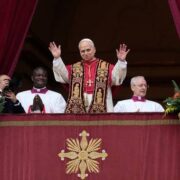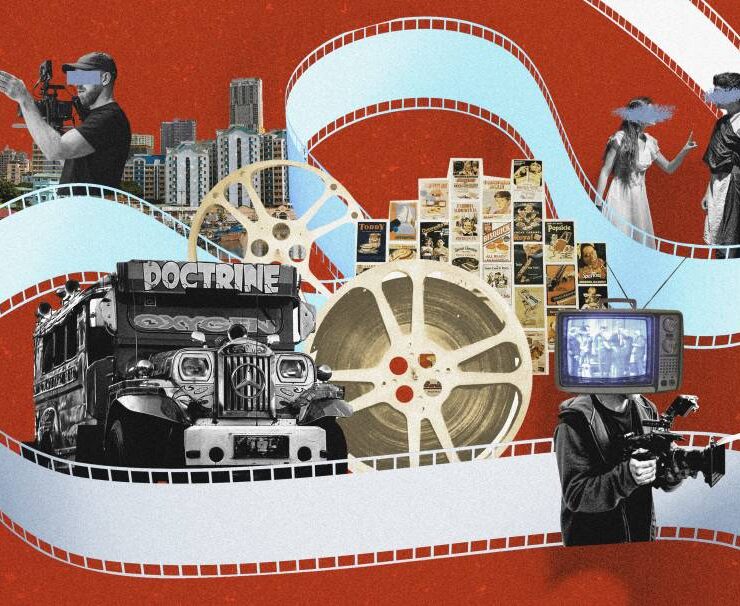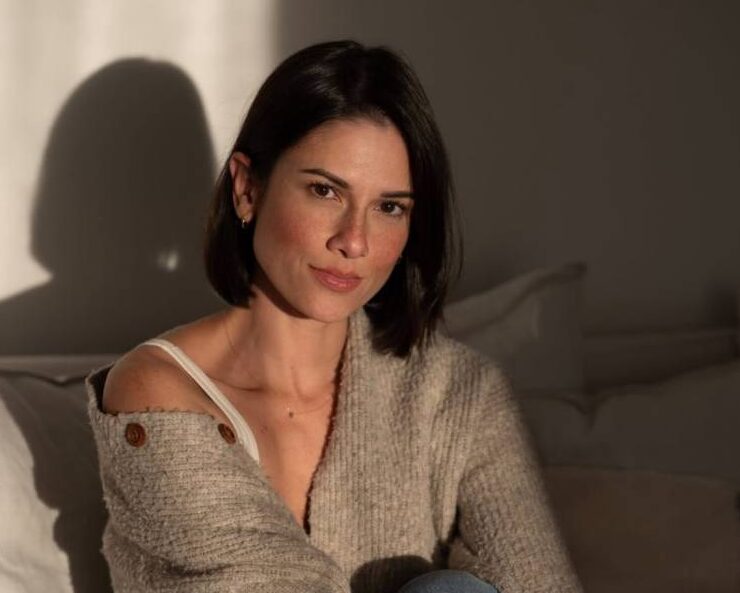Music sounds better with you
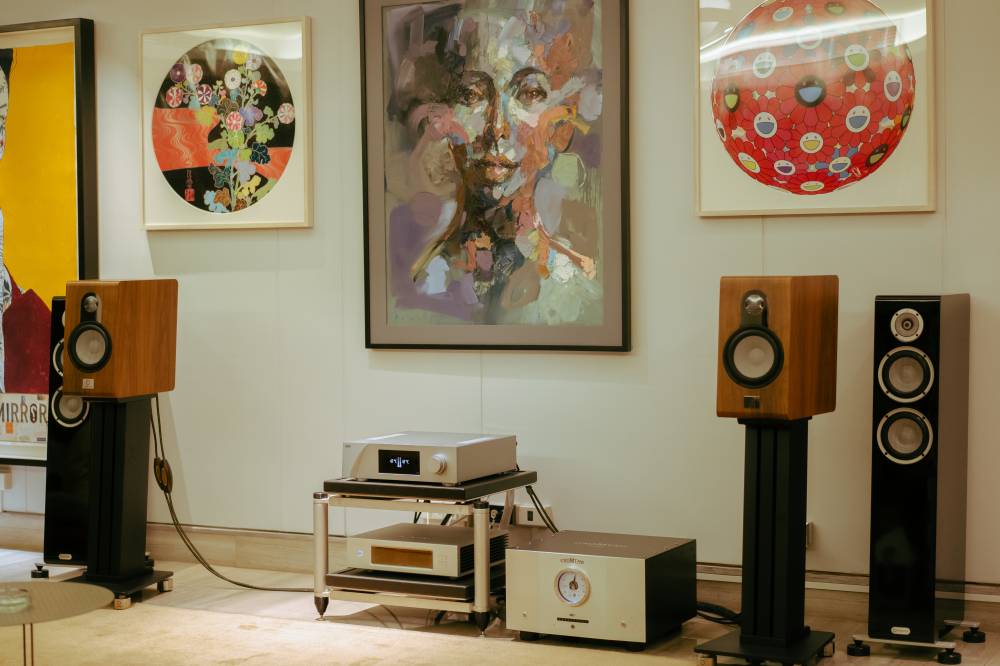
Do you remember the first song or album that made you fall in love with music? For me, it was U2’s “Sunday Bloody Sunday” and “New Year’s Day” in their live versions (from Red Rocks Amphitheatre, Colorado, 1983), followed closely by The Cure’s “The Walk” (live concert, 1984). But the first record I truly connected with—the one that carried me into a private interior world—was Tears for Fears’ “The Hurting” in vinyl, a gift of discovery passed down by my older brother.
Music through the years
I wouldn’t call myself an audiophile—at least not yet—but my earliest encounters with vinyl were magical all the same. It began with my parents’ Akai sound system. I’d play their records while sliding in my socks across the powder-dusted narra floor of our home, pretending to skate across the living room. The next would be my brother’s obsession with U2. By adopting his passion, my ear for new wave music was born. I began staying up late, waiting for something new on the radio, fingers on the record and play button of my cassette deck, hoping the DJ would stop talking for a clean recording.
Later, I moved on to the next level: collecting cassettes. That now-archaic format, often labeled in ballpoint, traded among friends or bought from underground shops, was huge for our generation. Mixtapes weren’t just music; they were our way of being social.
In support of this obsession were countless concerts (back when tickets were still reasonable), underground clubs where local bands tested original material, and even a night or two at a jazz lounge, listening to a singer’s haunting rendition of “Somewhere Over the Rainbow” that brought me to tears.
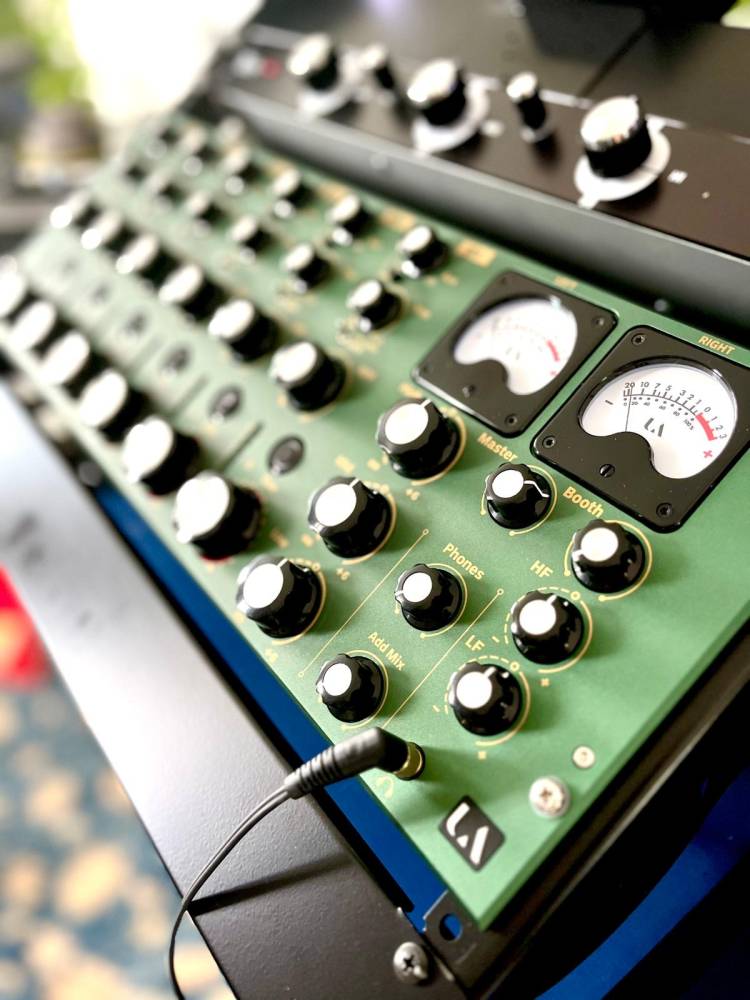
In those days, MTV ruled the air and screen as well. This new media platform delivered music as both sight and sound—a full-bodied experience, thus furthering and enhancing the influence of music. Who could forget Herbie Hancock’s daring “Rockit” performance at the 1984 Grammys, where his innovative use of electronics helped shape the future of music technology?
Today, with the power of Spotify and other streaming sources, virtually anyone can curate a playlist and transport themselves to that place music lovers go to, just as profoundly as it did for me decades earlier. Each moment of sound became a bridge to a particular memory or a ritual of discovery that would unfold a new path of listening.
But for me, the revelation came years later. It happened not on a dance floor, but in a living room. Listening to records on my ex-boyfriend’s (now husband’s) sound system, I sat facing the speakers and heard the voice of Jacintha, a jazz vocalist celebrated in the audiophile community, her breath between phrases. I was transported. Suddenly, music wasn’t background noise; it was ritual. Not something to be consumed in passing but rather something to be felt and experienced with full attention, until the noise of mind and body melted into a calm beyond words.
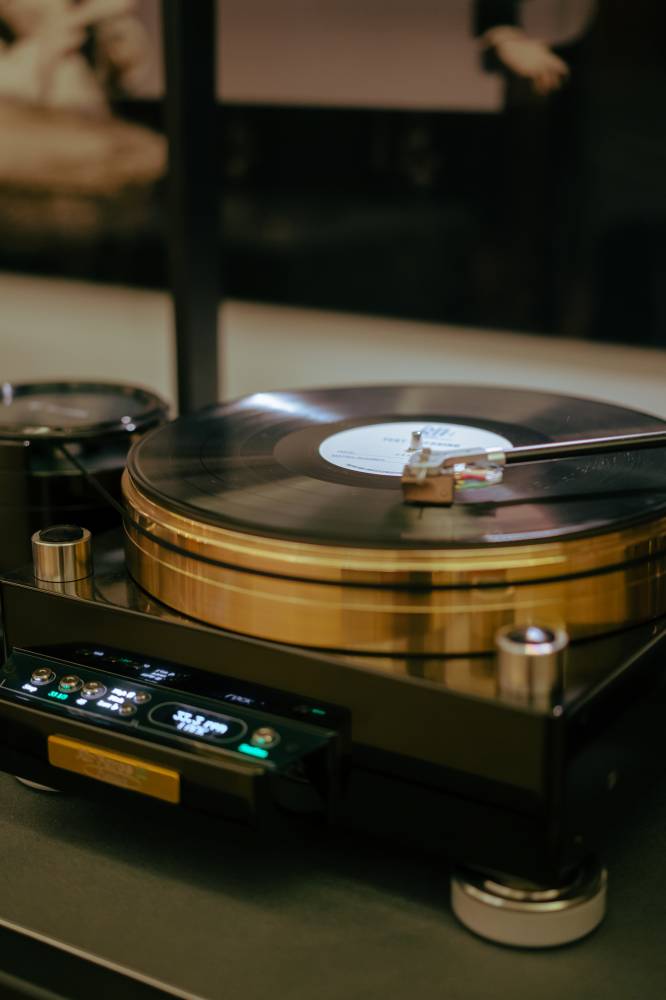
A culture of deep listening
That night opened a door I had only brushed from the outside: the culture of deep listening. And once inside, I began to notice it everywhere. It wasn’t just the music itself. It was often the quirky rituals that preceded it.
Before a single note could be heard, the system had to be awakened: the careful sequence of powering on components, letting amplifiers and tube amps warm up, and ensuring each element reached its ideal state of resonance. It was a practice of patience, a quiet protocol that transforms listening into a ceremony. Only then could the first song truly breathe, and only then could the room and the listener be fully ready to receive it.
In time, I met three men, also known as audiophiles—Jack Duavit, David Jacob, and Benjo Marquez—whose lives, philosophies, and even businesses orbit around music. Each listens differently, yet all share one conviction: Sound is never just technical. It is lifestyle, philosophy, hospitality, and maybe even part of their identity.
Though their paths diverged—through design, business, culture, and friendship—all three began as DJs, first drawn to the turntables by discovery, the pure love of music, and occasionally the practicality of earning enough to fund a date. That instinct to share sound, to shape moods and moments, never left them. It simply evolved into deeper listening, refined systems, and an endless pursuit where music is not background, but the centerpiece.
And so began my own path that started from late-night listens, live concerts, and the occasional hunt for music on the radio, then on cassettes and CDs, and now through streaming. Though those new wave records did not meet the standards of audiophile pressings, they were the catalyst. I have since learned that not all records are equal: The audiophile pressing is something else entirely, while streaming from a good source like Qobuz or Discogs is designed for depth, clarity, and emotional charge. I am still navigating this path, maybe even toward becoming an audiophile myself.
Let me introduce three gentlemen whose love for music turns every listening moment into a shared experience, a kind of art in itself.
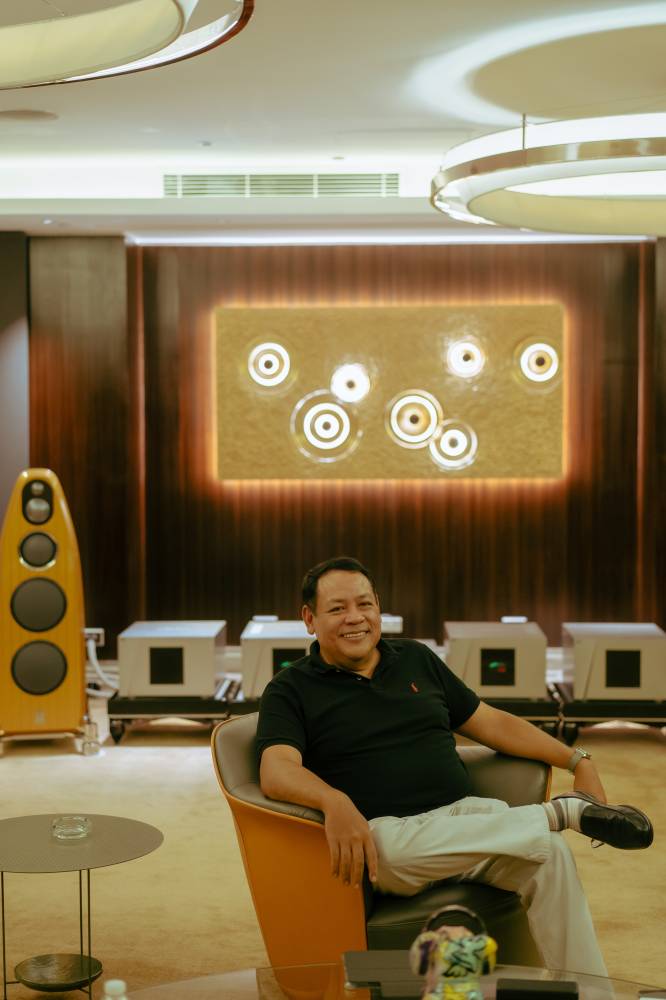
Jack Duavit: The nerd
The seemingly gentle and shy individual responds with a sweet smile when asked for a photo, belying a deep passion for sound as he recounts where his journey began.
“Music has been an integral part of our daily lives for as long as I can remember,” he says. “My partners and I are all second-generation audiophiles. The way we define audiophiles is someone who’s not just interested in the music, but also in the process by which it is recorded and ultimately reproduced. It just so happened that our parents were on the same path—we are just carrying that tradition on.”
He credits The Beatles cartoons on Saturday mornings with sparking the earliest fire. “‘Help!’ is the first song that made me dance,” he recalls. “The laughter of my siblings made that memory stick.”
For Duavit, who has lived many lives—public servant, businessman, family man—music is the constant. “Any time that does not demand my total concentration, I am most likely listening to music just to set some sort of rhythm,” he says. “Then of course, the exception—that would be when my full concentration is on the music itself.”
Duavit speaks about sound with both the precision of a scientist and the tenderness of a poet. “A system should be able to make me connect with the music on both an intellectual and emotional level,” he explains. “Articulation is key. It allows the listener to follow musical lines independently and zoom out to take in the whole. This way we can celebrate not just the lead vocalist or soloist but also the accompanying musicians, the composer, and the rest of the production team.”
He is also fascinated by the miracle of recorded sound itself. “Every time you play a track, a living, breathing person made the air move that, in turn, moved the microphone diaphragm. Those wiggles in voltage were either encoded kinetically (vinyl), chemically (tape), or numerically (digital) into these media. We are literally holding access to the aural history of our species in our hands.”
When entertaining at home, Duavit loves to cook and plays the music that is to his guests’ preference, an indication of how hospitality is part of the experience, usually familiar tunes from their formative years, with tempos and genres that set the right mood. Of course, requests are always welcome!
Duavit’s etiquette is simple: Respect the equipment—no touching unless invited—and be mindful of the listening experience, lowering your voice if someone is straining to hear.
At PureSound—the company he co-founded with Keith Roy and Richie Diaz—that spirit of sharing continues. “If anything, PureSound is an extension of our teen years DJ-ing parties for date money and extended curfews. The mission just went from making the people at the party happy to helping people bring the magic of music into their homes,” he says.
Duavit’s reference system reads like a collector’s dream: Marten Mingus Orchestra Loudspeakers, Dan D’Agostino Momentum Monoblocks, a Kronos Pro Turntable with Black Beauty Tonearm, a ZYX Ultimate Diamond Cartridge, and racks of MasterBuilt Audio cabling. A temple of sound, yes—but one that always points back to connection.
Pure sound. Pure class.
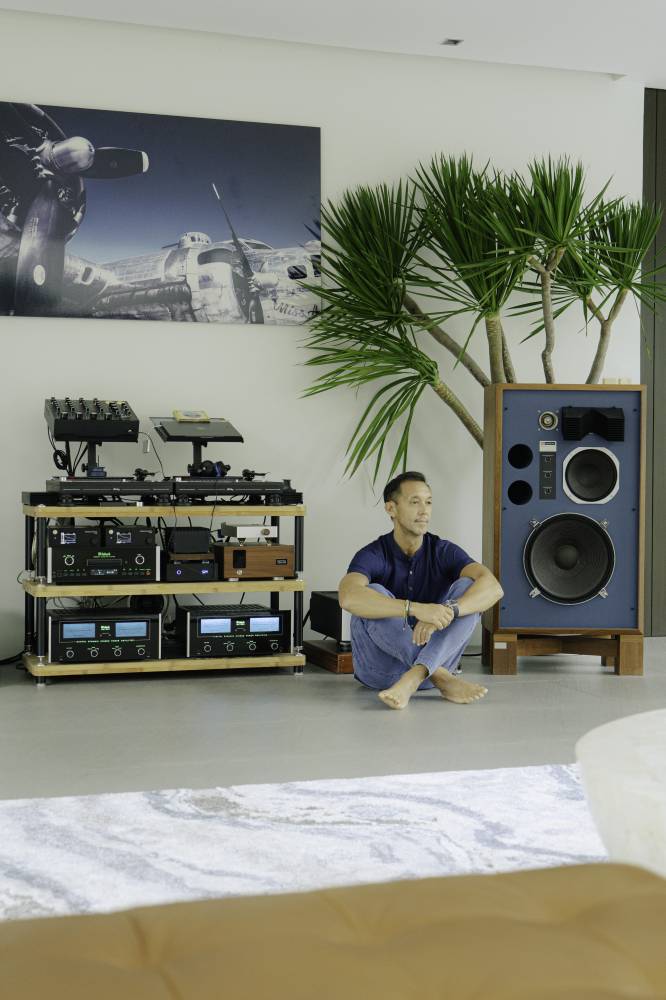
David Jacob: The DJ’s audiophile
Where Duavit is detail-driven, Jacob is led by the vibe. “I was always drawn to sound even at a very young age,” he says. “It was always an emotional connection with music.”
“So many genres influencing my palette for sound. I would have to say my love for early new wave was instrumental in defining my sound.” His first loves? Early new wave. “Two records defined that era for me—Blue Nile’s ‘Walk Across the Rooftops’ and Lotus Eaters’ ‘No Sense of Sin.’”
For Jacob, vinyl is a romance in itself. “It’s almost like a love affair with wax. Spinning vinyl is sexy—the grooves, the deep bass, the needle on the record, the touch and the romance of the cue.” Whether he is playing at an exclusive club in Europe or Asia or in the privacy of his own home, to him, there is nothing like it. For him, when he is using vinyl, it is not only nostalgia, but also a purpose. “The crackle, the pop, the imperfection—it’s all part of the sensory experience,” he explains.
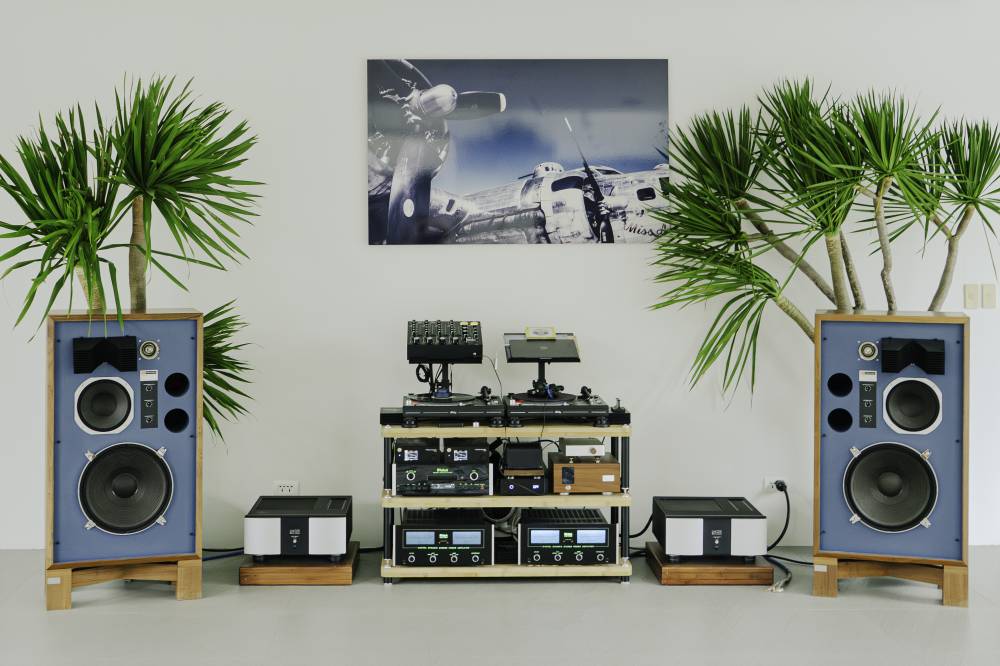
Music, he says, is his “safe haven.” Even now, his home life in Singapore balances DJ sets with family. “Amanda and I have very different tastes in music,” he laughs. “Hip hop versus house. It’s always fun to see what our kids will end up listening to. I hope I win!”
Though Jacob insists he is not a “technocrat in sound,” his pride and joy reveal a meticulous ear: a pair of custom JBL 4344s restored by Kenji Hosoi of Kenrick Sound Japan, paired with McIntosh and Mark Levinson amplifiers and tricked-out Technics SL 1210 MK5 turntables. His Manila system is nothing short of a cathedral. The airy, light-filled space of his home is punctuated by sculpture-like yuccas and a cozy leather sofa. It creates an atmosphere that is at once cool and immersive—a perfect sanctuary for deep listening.
For comfort, he turns to Sade, Blue Nile, or Prefab Sprout; for celebration, Maceo Plex, Danny Tenaglia, or The Care, and for winding down, Everything But the Girl, Mahle, or Astrud Gilberto. “For me, it’s always emotional—I don’t chase tech. I get lost even on my iPhone listening to music. Of course, the warmer a system can be, the deeper the emotion.”
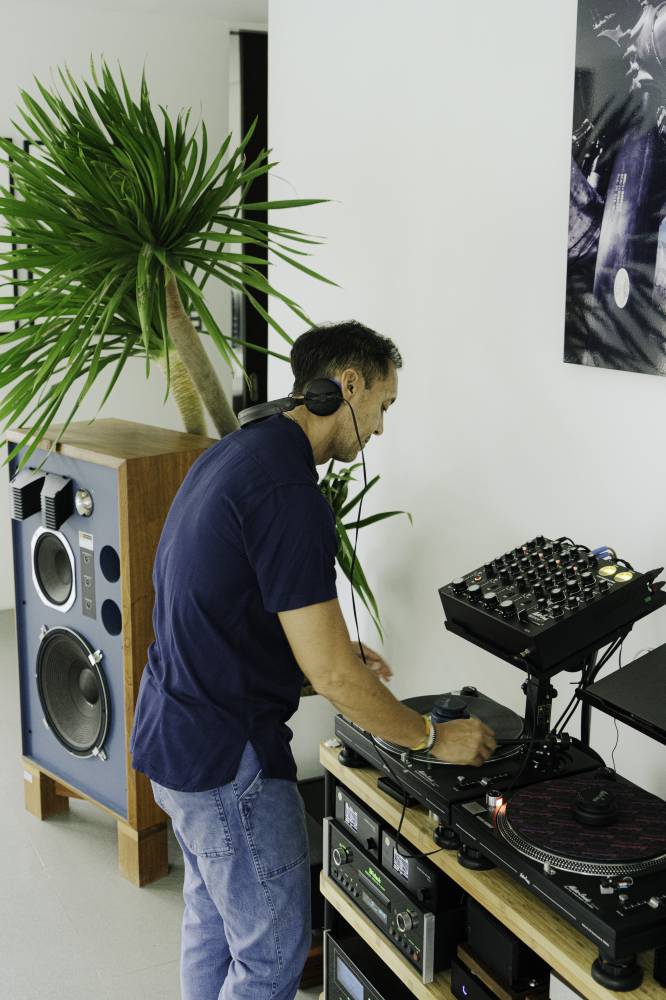
His new venture, Longevity Labs, brings those instincts into wellness. “The experience will be immersive. A unique system bespoke for the venue, intentional in a way that allows people to experience contrast therapy in an aural capacity. The community is important—and nothing like a kick-ass sound system to bring people together,” he reveals. And just like Jacob himself, Longevity Labs is about life improved—using science to strengthen cellular health, much like music restores balance and well-being when we listen deeply.
Pure emotion. Pure sound.
Benjo Marquez: The contemporist
Benjo Marquez grew up in a household where music was part of daily life. “My mom wanted to be a professional singer. My sisters were gifted with good voices, though sadly, not me. I found my outlet in guitar and drums, playing in rock bands by age 13.”
Skate culture led him into punk, with him ordering records from abroad before the internet made everything instant. “It was a labor of love reserved only for the most obsessed. Back then, if you didn’t have the physical album, you had no way of discovering new music.”
From punk, he drifted into San Francisco’s deep house scene in the ’90s. “I remember the first record I bought—Abstract Truth’s ‘We Had a Thing.’ Deep, jazzy, soulful, earthy—it perfectly captured a sound I was so taken by.”
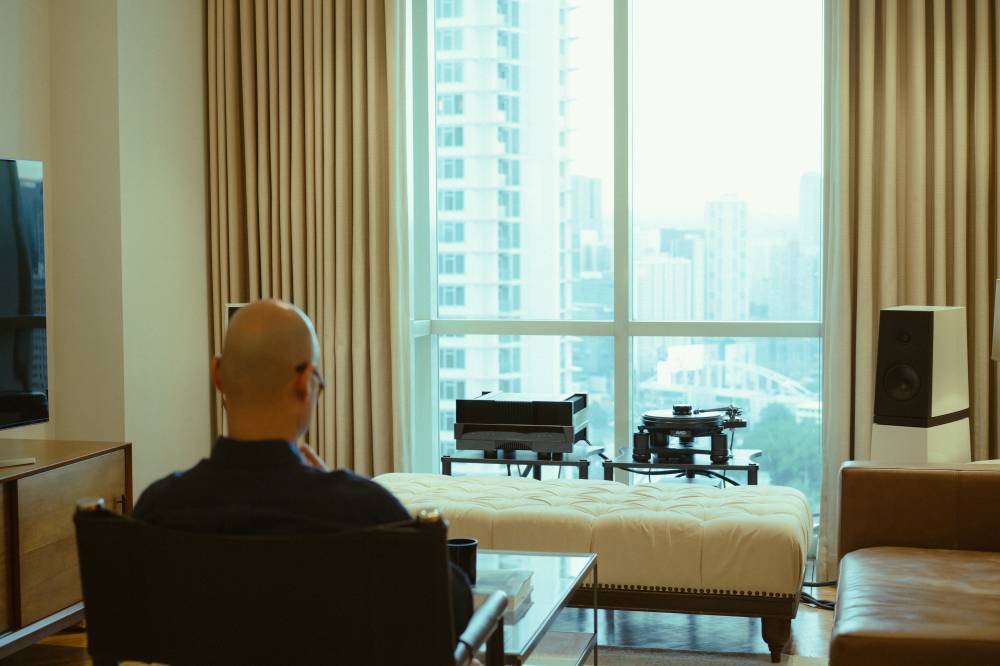
Today, for Marquez, music and aesthetics are inseparable. “Socrates said, ‘The unexamined life is not worth living.’ I believe God gave us beauty, and he is the ultimate craftsman. I am not drawn to these things for superficial reasons but more for the enjoyment of the sensibilities that it creates. When I hear good music, taste good flavors, and experience good design, I feel God’s pleasure.”
DJing, he says, was never about ego but about narrative. “You want to take people on a musical journey by introducing them to music they may not have heard, then stitching it together in a way that moves them. That’s the measure of success.”
These days, his hospitality extends to listening sessions with friends—sometimes paired with cigars and whisky. “An aged Trinidad Fundadores with a dram of Glen Garioch Samaroli 1971 and Ike Quebec’s Blue & Sentimental. Perfection.”
Visiting Marquez’s apartment was a sensory pleasure—the light, the skyline, the curated collection of coffee table books like ECM’s Cultural Archaeology. He invited me to his listening chair as Dominic Miller played, followed by an Elvis record I adore. Noticing I sipped water, he offered a spirit, but I declined. Somehow, the entire moment felt like drinking from Iceland’s pure underground springs—pristine, immersive, and unforgettable.
Soon, he’ll bring this philosophy to the public through GotSoul MNL, a community listening bar. “We’ll showcase vintage and modern systems—a Quadraphonic High-output system from TPI Sound UK, a pair of Altec Horns with tube amps. Chef Chele González, also a DJ, will helm the kitchen. We want to bring an innovative type of hospitality—local, independent, but with global standards.”
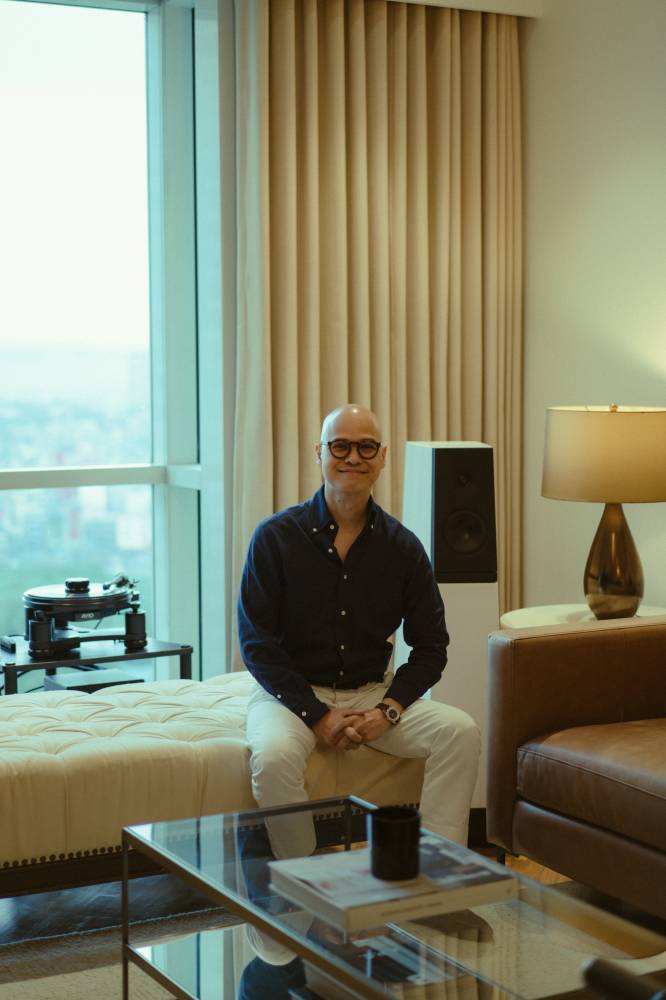
His advice for guests is simple: “Close your eyes. Be silent. Appreciate what the host has built. Never criticize someone’s system—it’s subjective, and always evolving. And as a courtesy, let the host cue the music first.”
Marquez’s setup is formidable: Verity Audio Parsifal Anniversary loudspeakers, Gryphon Diablo 300 integrated amp, Avid Sequel SP turntable. But the real magic, as he insists, is in sharing.
Pure taste. Pure sound.
The heart of music
Spending time with Duavit, Jacob, and Marquez reminded me that while cartridges, cables, and components matter, the heart of listening is not technical; it is human. It is about hospitality and the joy of sharing music, whether with family, with friends, or alone in the quiet of a living or listening room. And for an audiophile, it is never about loudness—it is about quality, clarity, and fidelity. True sound immerses you without shouting. It moves the mind and the heart, not the walls.
In the end, music always comes back to the soul. Technology may reproduce the air that once moved in a studio decades ago, but it is the listener who brings it alive. As Jack once reminded me, nothing will ever beat being in the same place when the magic happens. Yet with a good source, a good sound system, and a little soul, you get close—very close.
The lyrics of the song by Stardust certainly ring true because “the music sounds better with you.”
Cheers to those who listen deeply. Happy World Audiophile Day! Celebrated each year on Oct. 2 since 2016. Honoring the passionate pursuit of perfect sound.
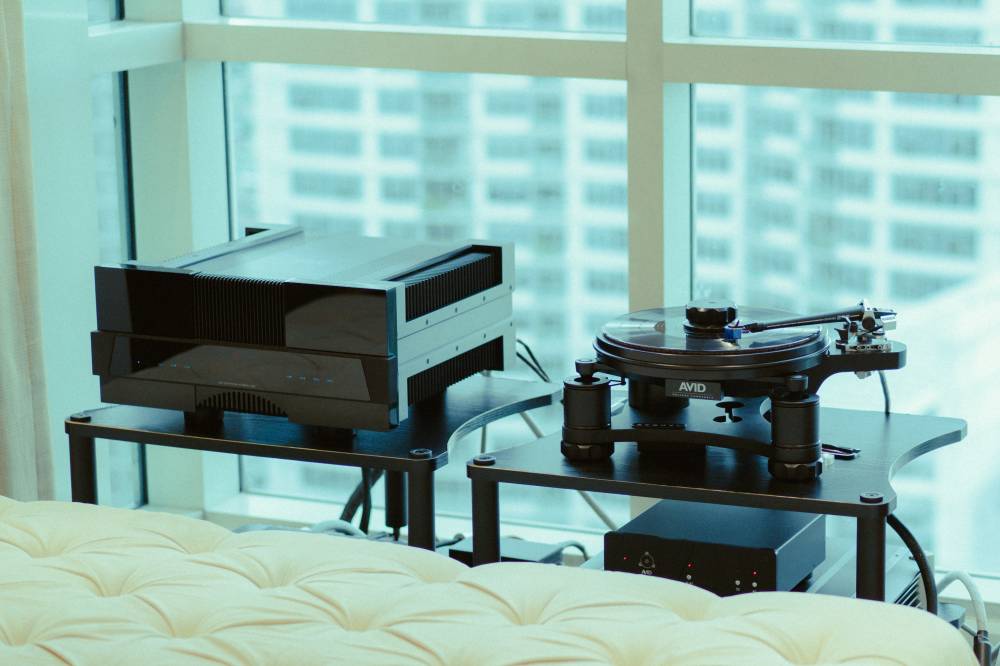
Audiophile starter kit
• Marten Oscar Duo loudspeakers
• Java HiFi Single Shot Integrated amplifier with built-in digital-analog converter and Moving Magnet Phono Stage
• MasterBuilt cables
• Critical Mass System audio racks
Vinyl moments that last forever
• “Songs from the Big Chair” by Tears for Fears
• “Diamond Life” by Sade
• “Under a Blood Red Sky” by U2
• “Getz/Gilberto” by Stan Getz and Joao Gilberto Original
• “Riders on the Storm” by The Doors
• “24 Karats Hits” by Elvis Presley
• “I’m Not in Love” by 10cc
• “Greatest Hits” by Fleetwood Mac
• “The Bodyguard” by Whitney Houston
• “Cocteau Twins” by Heaven or Las Vegas




